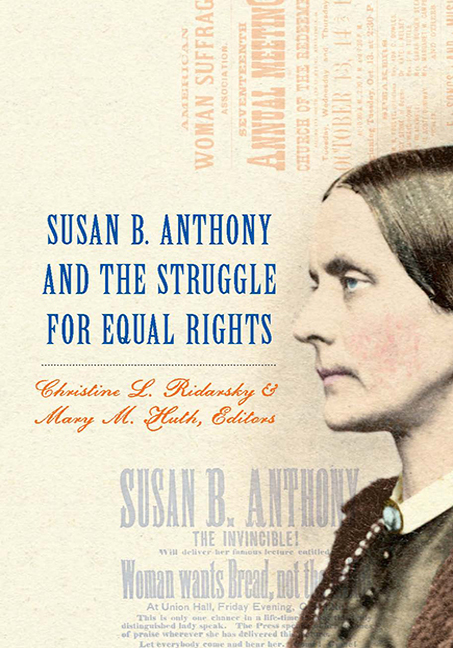Book contents
Chapter 7 - Knowing Susan B. Anthony: The Stories We Tell of a Life
from Part 4 - Reconstructing Memory
Published online by Cambridge University Press: 09 May 2017
Summary
Stories about Susan B. Anthony trace two key roles she played in the nineteenth-century movement for women's rights. First, she was an engaged leader who herded her troops toward their goals, most importantly toward a federal guarantee of women's right to vote. This flesh-and-blood Anthony set an example of public protest early in her career and worked hard by the side of often younger coworkers until the last weeks of her life. Second and simultaneously, Susan B. Anthony was the most familiar symbol of the cause for which she advocated, useful to her allies and opponents alike in images ranging from sainthood to desiccation. It is a complicating truth about her life that no other nineteenth-century American lived so many years exposed to the public view as she did. Under the gaze of journalists, cartoonists, photographers, coworkers and rivals, strangers in the audience, and political opponents, this unusual woman of plain looks and enormous energy acquired a kind of shadow self on which her contemporaries inscribed their responses to her political message. By the end of Anthony's life, it was difficult to distinguish between the two roles, and since her death, it has seemed impossible. To this day, politicians, feminists, zealots, biographers, and historians create their own Anthonys through a creative mix of the person known to us by her deeds and written record, on the one hand, and the shifting images of her, on the other hand.
This essay looks at appropriations of Anthony as a symbol—in the political cauldron of suffrage politics, in biographies that appeared during her lifetime and in the wake of the Nineteenth Amendment, and in the modern era, where Anthony has assumed the extreme and contradictory forms of antiabortion activist and unpopular dollar coin. Although the examples promote an imagined character bearing the name of Susan B. Anthony, a critical look at the uses of the symbol shines a light on aspects of the knowable person whose work had an immeasurable impact on the course of American history.
By the end of the Civil War, Susan B. Anthony occupied new social and political territory. She was emerging on the national scene as a female leader, something new in American history, and she did so as a single woman in a culture that perceived the spinster as anomalous and unguarded.
- Type
- Chapter
- Information
- Susan B. Anthony and the Struggle for Equal Rights , pp. 201 - 234Publisher: Boydell & BrewerPrint publication year: 2012

